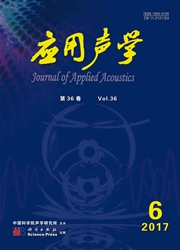

 中文摘要:
中文摘要:
对偶极子声源在疏松砂岩井孔中的声波传播机制进行研究具有重要的理论和实际应用价值,可以指导实际测井过程中仪器工作参数的选择及提高资料的处理和解释水平。本文针对实际正交偶极子声波测井中遇到的疏松砂岩超软地层横波测量问题进行了理论分析与数值模拟,计算模拟了偶极子声源在一般软地层和疏松砂岩地层井孔中的传播情况,并对比分析了声场波形与井孔中激发的弯曲波和激发谱的特征之间的内在联系,还根据疏松砂岩地层井孔中的声波传播特点,提出了在这类地层条件下应用偶极子声波测井应注意的若干问题,并指出,在超软地层横波测量中,偶极子声源的中心频率应适当降低,但也不是越低越好,否则达不到预期的效果。本文的研究结果无疑对正交偶极子声波测井声源的设计具有指导作用。
 英文摘要:
英文摘要:
Understanding borehole acoustic wave propagation for dipole acoustic logging in unconsolidated sandstone formations is important from theoretical and practical aspects. It provides guidance for improving data processing and interpretation, as well as for optimizing tool designing. In this paper, we numerically study wave propagation in boreholes for general soft and unconsolidated sandstone formations excited by dipole sources respectively, and analyze the intrinsic relations between received waveforms and the characteristics of flexural modes and excitation spectra. The summarized conclusions give suggestions for the usage of dipole acoustic logging according to the calculation results obtained for unconsolidated formations. We point out that the center frequency of the acoustic sources should be appropriately reduced, but not as low as possible, otherwise we could not achieve desired results. These conclusions provide guidance for the design of acoustic source for cross dipole acoustic logging apparatus.
 同期刊论文项目
同期刊论文项目
 同项目期刊论文
同项目期刊论文
 期刊信息
期刊信息
